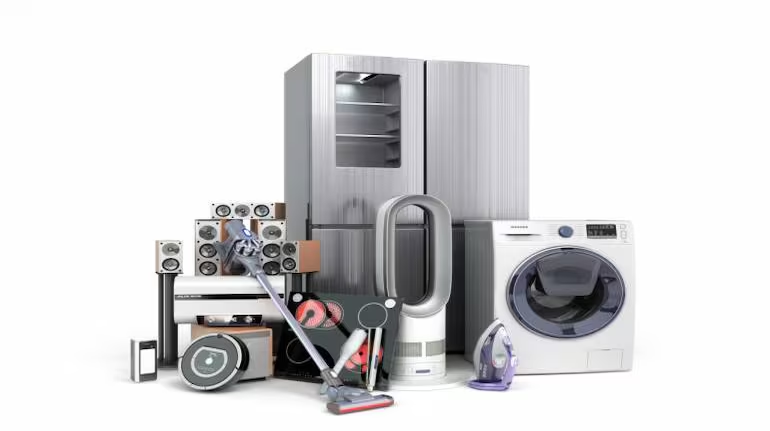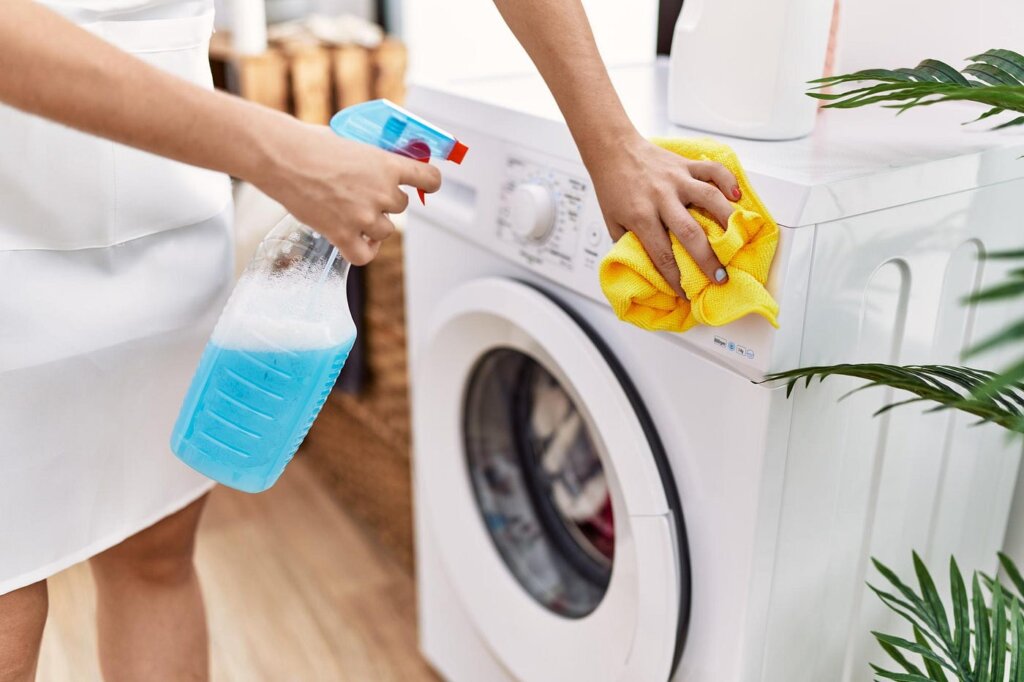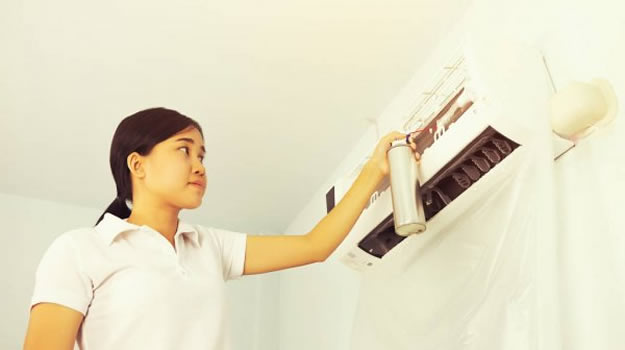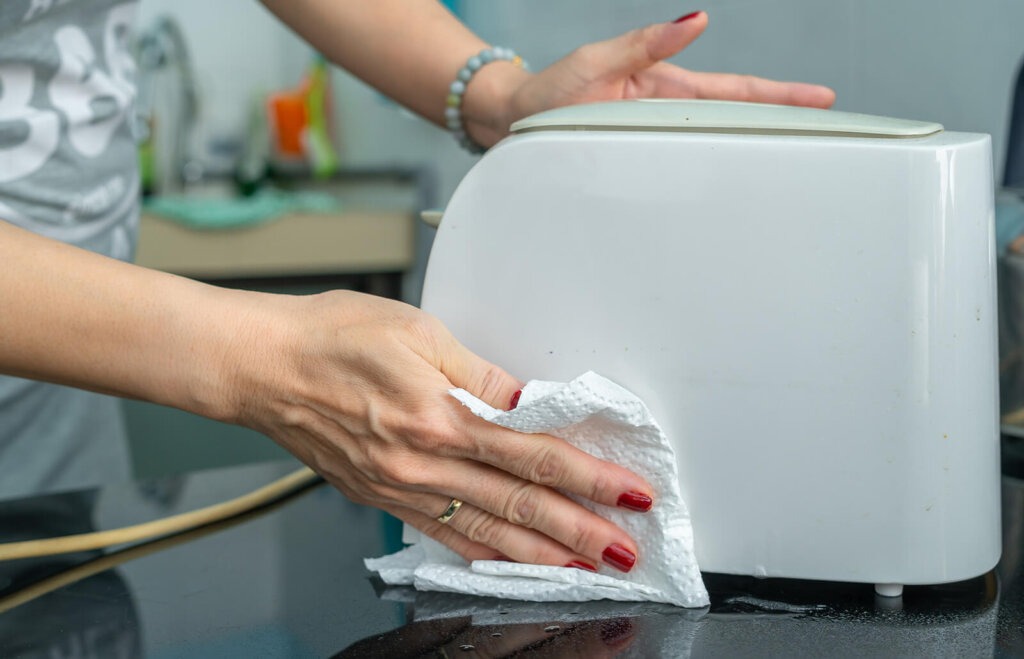
Home appliances are durables and a long term purchase and therefore special attention needs to be taken of their maintenance.
Given the high expense associated with them, we need to ensure that they last us for a long period of time.
The life of appliances can be prolonged by maintaining them in a good condition.
A lot of the maintenance activities are common across appliances, while some specific care needs to be taken basis the appliance type.
Maintenance of appliances should be a part of your monthly home cleaning & maintenance routine, so that timely care is taken and spoilage of appliances is avoided.
Well maintained appliances ensure that they are safe to use and your family and home are protected.
Another advantage of maintaining appliances is that it ensures they stay energy efficient and power bills are reduced.
Below are 10 DIY ways for maintaining your home appliances
#1. General maintenance tips

The first step towards appliance care is cleaning. Cleaning allows accumulated debris and dirt to be removed, so that they do not come in the way of the appliance’s functioning.
Cleaning of appliances should be done on a regular, read weekly basis.
Read the instruction manual that comes with your appliance to know what specific things to look out for and maintenance activities to be followed.
Get regular servicing as needed done from the brand to ensure that they function optimally.
Check for any parts that may not be functioning as desired and arrange for a repair at the earliest.
If repair is not possible, replace the part with an original from the brand to get your appliance in working condition again.
#2. Refrigerator

When it comes to refrigerator, there are some specific things to be paid attention to.
The first is the rubber seals which come into play while closing your refrigerator.
Ensure that this seal is tight and has not become loose over time or does not stay open.
If it does, it means warm air can get inside your refrigerator and your machine has to work doubly hard to maintain coolness.
Many times deposits of food can get stuck on to the seals, making them lose.
Clean the seals with a solution of water and baking soda to remove the food debris.
The other area is your condenser coils. They play an important role in getting heat released from inside to the outside.
These over time get dirty and dirt and grime accumulate on them.
Again, clean these regularly to stop this from happening. You can pull out your refrigerator and use an attachment brush on your vacuum to have the coils cleaned.
Always check the refrigerator temperature to ensure it is at 37-38 degree Fahrenheit and the freezer is at 0 degrees. This helps the refrigerator operate at it’s best.
Also your refrigerator needs thermal mass to to maintain the low temperatures it needs to keep food and drinks cold. If it is empty, it is suggested to keep empty bottles inside it to fill it up in order to maintain the thermal mass.
#3. Washing Machine

In washing machines, special attention is to be paid to the hoses.
They are important for water to flow smoothly inwards and outwards.
Automatic and semi-automatic machines have three hoses – two inlets and one outlet.
You need to ensure that the inlets are properly connected to the water source and have no leaks or cracks to avoid any spillage.
You must also keep a check on the condition of the outlet. The outlet removes all the dirt and lint, and that is why you must keep cleaning it regularly.
Secondly, it is important to check washing machine filters (some are not accessible) and clean them regularly.
A lint filter is present in semi-automatic washing machines and is used to extract lint and dirt particles from the washing process and clean the bag.
This filter also needs to be cleaned because once it is full, it might not collect dirt or debris anymore, which will get stuck on the clothes.
Also, these particles will get collected in the washing machine, reducing its life and performance.
In some cases, it might damage the pulsator and agitator, which might cost you a lot.
Therefore, it is critical to clean and replace this lint filter regularly to avoid any blockage in the filter caused by the accumulation of dirt and debris.
So, we should clean our machine filter at least once a month.
Also, consider using a descaling solution regularly depending on your water hardness.
#4. Dryer

The first thing you will want to do to take better care of your dryer is to clean the lint filter every time you put in a load.
About ⅓ of dryer-related fires are caused by lint filters that are dirty and full.
Removing the lint every time you run your dryer will keep it maintained and safe.
Moisture, dirt and lint can quickly accumulate underneath your dryer and behind it.
It’s a good idea to vacuum behind and underneath your dryer every few months, or more often if you see dust accumulating.
You will also want to have the dryer vent tubes professionally inspected and cleaned at least once a year.
Even if you’re diligent about cleaning the lint screen, it’s not uncommon for lint and debris to settle in the ventilation tube and obstruct the flow of air.
A clogged vent is a dangerous fire hazard that should be addressed right away, so check to make sure the hot air from the dryer is moving through the ventilation tube and coming out the exterior vent.
#5. Dishwasher

If your dishwasher has a filter, remove it and clean off any food or grime.
Food can become trapped in the filter and impair cleaning.
Clean the Door and Seals – Dishwashers have seals around the door rim to prevent the machine from leaking while running.
Wipe down the rubber seals and the door with a damp cloth to prevent soil and grime from building up.
Clean the Spray Arm – Wipe down the spray arm with a damp towel. We recommend removing the spray arm to clear any blockages with a toothpick every six months.
Refer to your owner’s manual for detailed instructions on how to remove and clean your spray arm.
Reduce build up with vinegar – Use vinegar to clean out your dishwasher to remove any stuck food particles or residual detergent left behind.
The vinegar will disinfect the dishwasher and break down any residue stuck inside.
#6. Oven and stove

Ensure Oven Door has a Tight Seal – Your oven is not only a source of great meals, but also a provider of major heat in your home.
If your oven’s door seal is compromised, your oven can lose more than 20 percent of its heat.
This loss is not only energy-inefficient but also has practical results – your food may take significantly longer to cook or may cook unevenly, which puts you at risk for consuming undercooked food.
To check the condition of your oven seal, open the oven door and locate the rubber gasket located around the edge.
Take your finger and feel for any broken or damaged areas. Then, close the door to see if you can detect any potential leaks.
If you find damage or a leak, then it’s time to replace the seal.
Wipe Up Stove Spills – It’s common for your stove to be a catch-all for leftover food particles and dried liquids that occur from everyday cooking.
However, if spilled food particles compile over time, the build-up can prevent a stove burner from turning on and working properly.
To clean your stovetop, start by soaking your burners, knobs, and hood vents in your sink for a couple of hours, if possible.
If you have metal drip plates, use a steel wool to remove anything stuck or difficult to remove.
Finally, wipe down any stove spills and vacuum the crumbs that have become stuck in the cracks between the counter and the stove.
#7. Microwave

Sponge up spills as soon as they occur.
Bits of food left behind can absorb some of the microwave’s energy when you turn it on again, creating a hot spot that can damage the interior.
Take special care not to scratch the protective mesh inside the door if it’s exposed, because it prevents microwaves from escaping and zapping you.
Turn on the exhaust fan – If you neglect to turn on the exhaust fan, the moisture rising from pots and pans (think pasta) can collect on the electronics of the microwave and shorten its life span.
If moisture collects, wipe it off with a paper towel or soft cloth.
Degrease the grease filter – it’s easy to forget these filters on the underside of the microwave, which trap steam and cooking fumes.
But if you let them get too gunky, they can cause your microwave to run less efficiently and pose a fire hazard.
If your filter no longer fits snugly, replace it.
#8. Air Conditioner

Get the air filter washed and cleaned – Air filters in ACs help in stopping dirt and dust particles from coming into your room.
These air filters should not have an excess of particulate matter and should be cleaned in order to function efficiently.
If your air filter is dirty, it will not only put excessive strain on the AC but also impact your room’s air quality.
Air Filters can be easily be cleaned by end-users on a regular basis.
Get the coils cleaned – Air conditioning coils assist the refrigerant in absorbing the heat and cooling the room.
These coils tend to become insulated with dust particles which reduce their ability to absorb heat.
In such a situation, the air conditioning unit has to work harder for maintaining the room’s temperature.
Therefore, make sure that the coils are cleaned regularly to prevent such a situation.
#9. Small appliances

Taking proper care of small appliances is crucial to their long life and efficient operation.
These appliances include blenders, toasters, coffee makers, and more.
To care for your small appliance, always refer to the manufacturer’s instructions for usage and maintenance.
This may include cleaning the exterior and interior of the device, unplugging it when not in use, and avoiding overloading it.
Regular upkeep can prevent accidents, prolong the life of the appliance, and ensure that it continues to operate without issues.
#10. Energy Efficiency Tips

Buy appliances with high energy rating, to ensure you get the best overall value.
While cooking, use small appliances where possible. Use the microwave over a conventional oven, the toaster over the grill, or the kettle over the hotplate.
Put fitted lids on pots as much as possible. This helps the pot’s contents get up to temperature quicker.
Avoid opening the oven door unnecessarily when cooking
For dishwashers, use economy settings unless you have a large or heavily soiled load.
For washing machines, wash a full load instead of many smaller loads.
In refrigerators, keep the fridge and freezer doors closed as much as possible to keep the cold air in. Plus, keeping them full will use less electricity to re-cool after you close the door.
Unplug When Not in Use – Even when turned off, many appliances consume power if they remain plugged in, known as “phantom load” or “standby power.”
Unplug devices like toasters, coffee makers, and chargers when they’re not in use.
These are some of the DIY ways of maintaining home appliances. These tips can go a long way in ensuring you are using your home appliances in the most efficient manner and making good use of them.